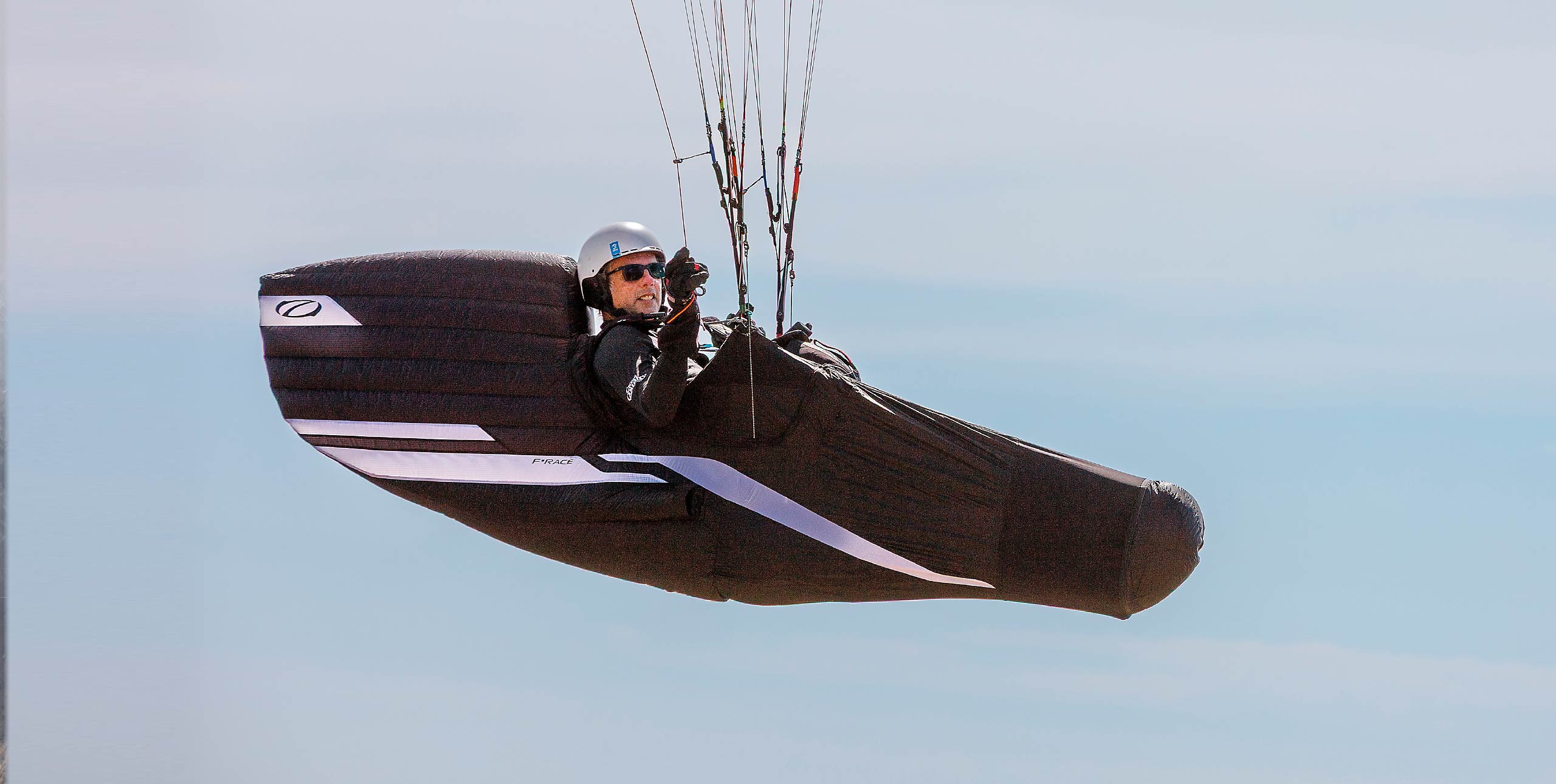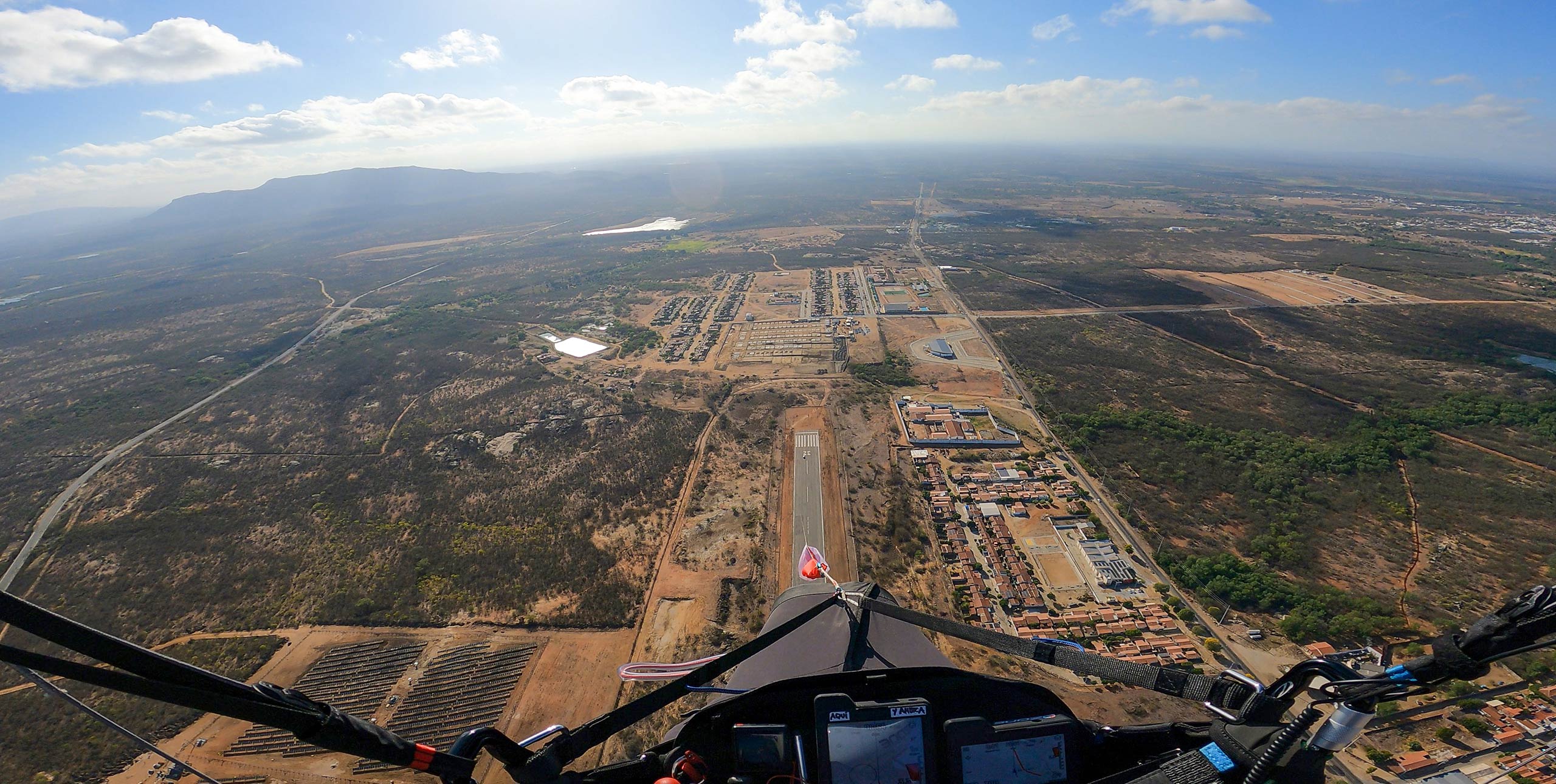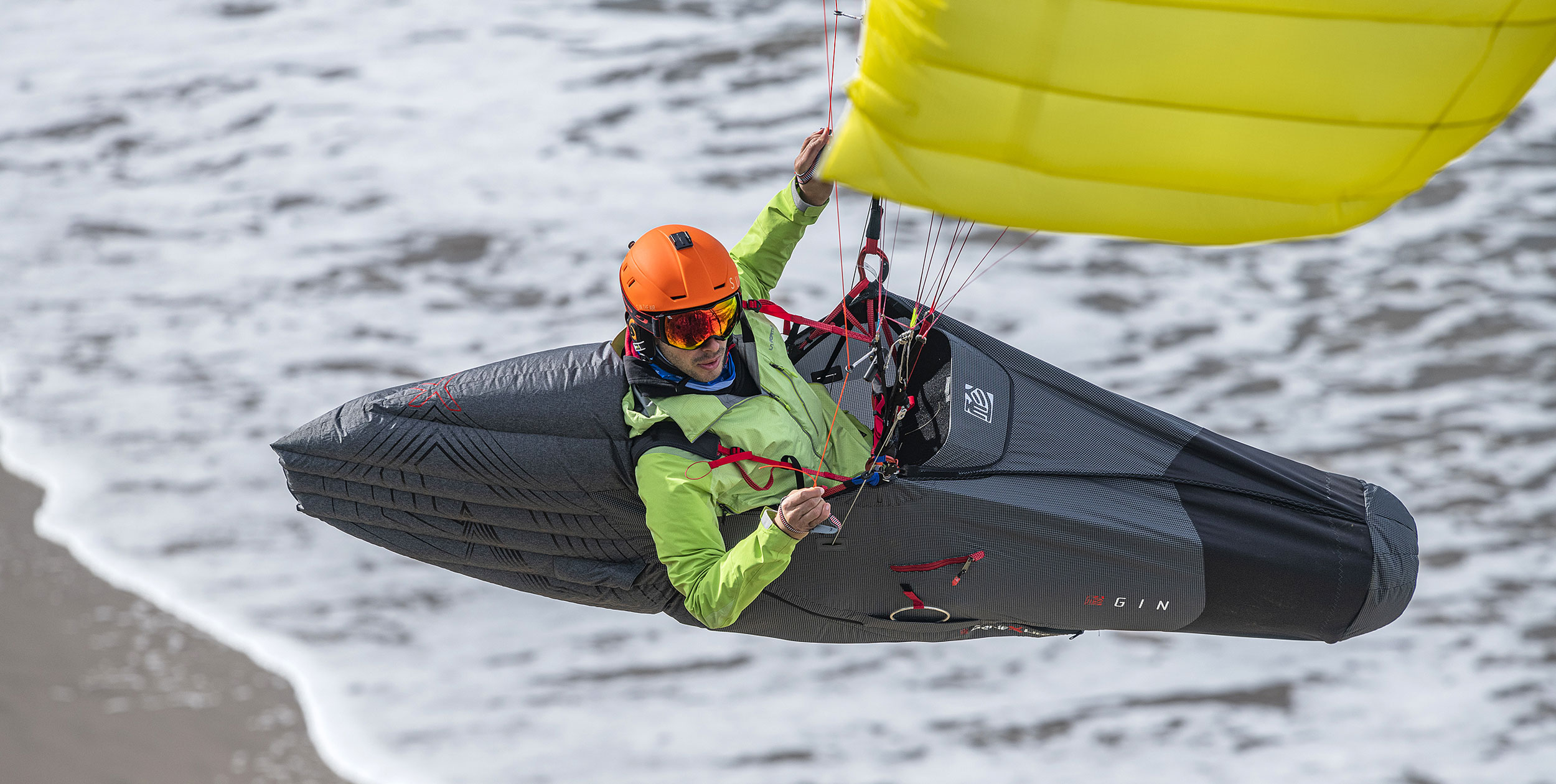
“You have three wishes…” Marcus King flies Gin’s Genie X-Lite pod harness.
Gin bill this new version of the Genie harness as a harness for cross-country pilots who also want to hike-and-fly or go on vol-bivouac adventures. It fits between the Genie X-Alps, which is no longer showing on their website, and the Genie Lite 3. The X-Alps was a lighter, more specialist hike-and-fly comp-style harness; the Genie X-Lite weighs between 3kg and 3.48kg, is available in four sizes and looks more suitable for everyday use.
First look
Opening the box I was struck by the style of the new harness. It follows the look of the heavier Genie Lite 3, with the use of smart, techy-looking grey 70D Extreema material (a brand name for 70D Dyneema) with red highlights. Although light the material seems more robust than that used on some hike-and-fly pods. As with the heavier version there is a rear self-inflating fairing for aerodynamic stability. There is also a large “X” printed on the rear fairing, adding to the techy look.
The harness is available in four sizes, so you should be able to find one that fits well. I had the L on test, which weighs 3.48kg. This compares well with the Woody Valley GTO Light 2, the obvious competitor, that weighs 3.66kg in a similar size. Looking over the harness it is obviously well thought out and finished to a high level.
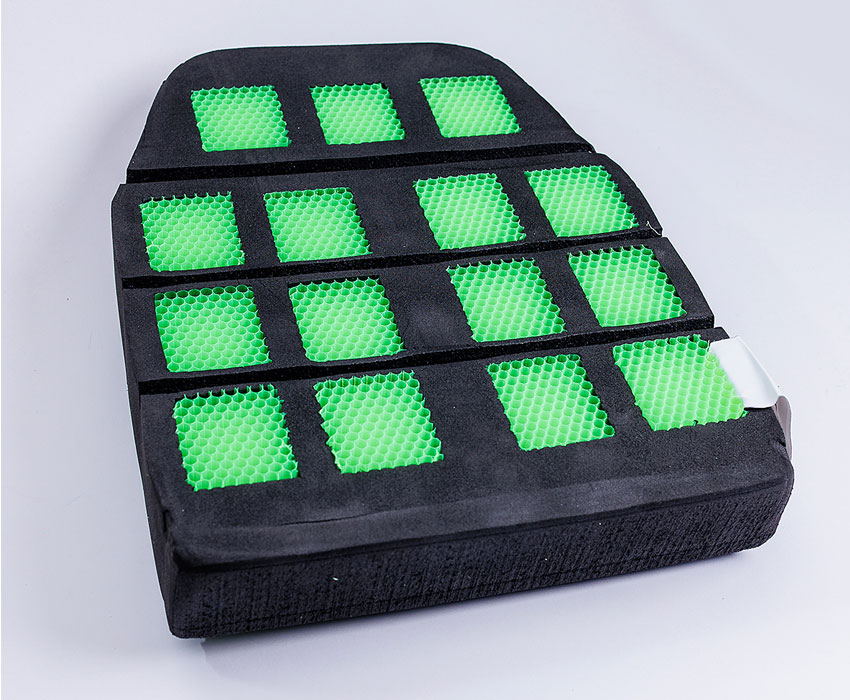
Security
The X-Lite uses a Koroyd protector similar to the one used in the Genie Lite and the Neo Stay-Up harnesses. This is created using a whole load of straw-like tubes that form a honeycomb structure. The protector in the X-Lite is thinner than the previously used one and doesn’t extend up the back like the previous one either. Gin say this helped them make the harness their “most aerodynamic yet,” and the slim protector also means the harness is compact when packed down.
The protector is of course EN certified with a figure of 48G, which is fairly close to the 50G limit. It should be said though that the EN certification requires two test drops to be done with the same protector. As Koroyd is designed to be “destroyed” when it absorbs the energy this results in the second drop result being higher – and this higher figure becomes the result. Looking at the first drop gives a better figure of 42G, closer to some other similar harnesses. The stiffness of the Koroyd means there is no need for a seatboard – there is just a short board across the front of the seat area.
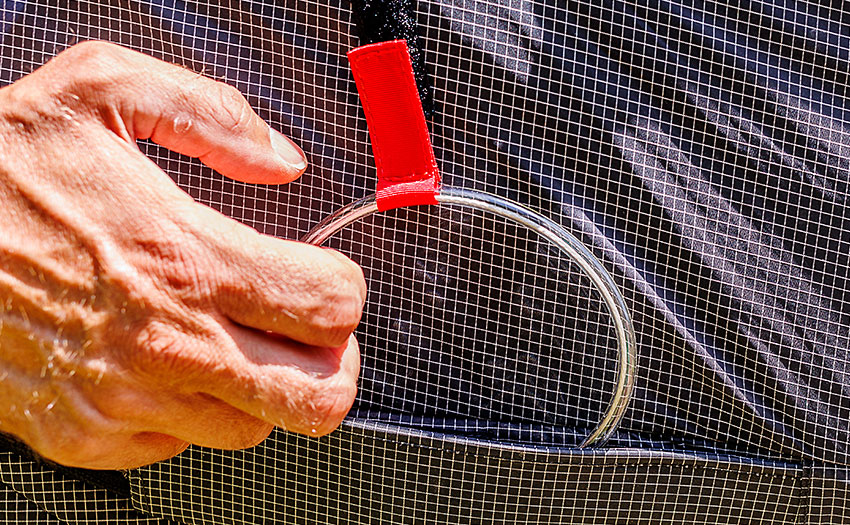
The harness is designed with a single reserve. This is under the seat and sits in a pocket in front of the back protector, keeping the overall depth of the harness to a minimum. The bridles run through a zipped channel to the shoulders. The harness comes with a dedicated inner bag for the reserve and the system is closed with two plastic pins. Another zip at the front opens to make extraction easy.
Although the handle is low profile it is where your hand falls naturally on your hip. As it is on the right hip it can only be used with your right hand. For those pilots that want the added security of a second reserve that can be used by both hands, the optional Genie Lite Rescue Deck can be fitted to the flight deck.
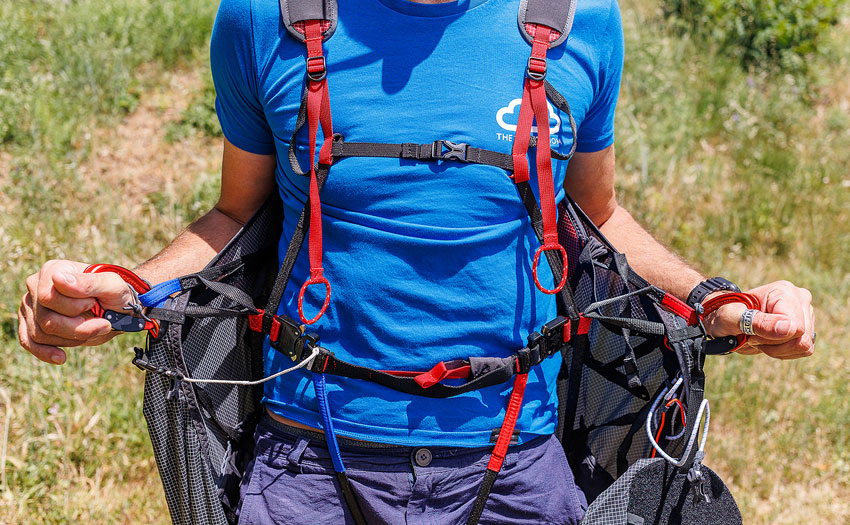
Getting seated
Unlike some of the lighter harnesses, getting into the Genie X-Lite is very simple, with no stepping-in required. The main chest strap is an easy-up T-bar style with quick-clip buckles, so there are just two main clips to do up. The pod is closed with plastic clips, one to an elastic rope and the other to a safety reminder attached to the main chest strap. There is a high chest strap as well to keep the shoulder straps in place.
The pod is adjusted using three cords that run up each side. Adjustment is done by sliding a prussik loop between pre-tied knots; finer control of the angle is made by moving a plastic bead up a line. The footplate is a lightweight triplex board and is supported at four points, making it stable even for long-legged pilots like me.
Getting into the pod is simple with no special techniques needed. There is no magnet closure but it didn’t feel necessary as the pod stayed shut in the air. The material used is light but still does a great job of keeping the wind out: I couldn’t feel any chill creeping in even at 3,000m in shorts.
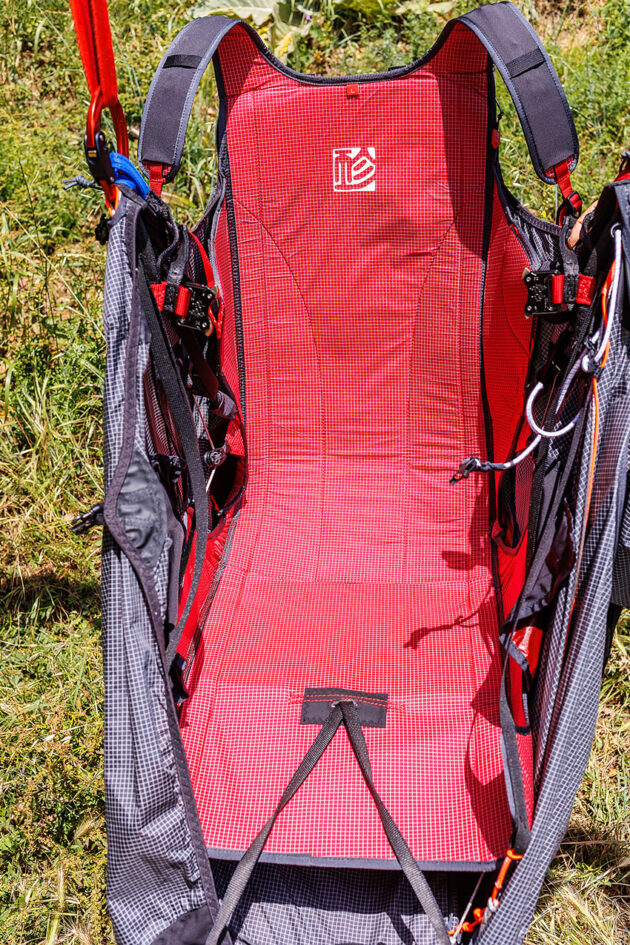
As well as the shoulder and chest straps, there are two adjustable straps on each side that allow you to adjust the upper and lower back angles. I like that they are adjustable in flight, so you can get them dialled in easily and adjust as necessary. Unlike some harnesses there is no adjustment to pull up the front of the seat.
When I sat in the harness for the first time it felt pretty hard, with quite a stiff back and not a huge amount of padding on the seat. But I was coming from a hammock-style harness with an inflatable protector. Once I was used to it I found the harness very comfortable; the back adjustment certainly helps in this respect as you can adjust the support to fit you and your style of flying.
There is a three-step soft speed bar fitted. Elastic attaches it to the footplate to keep it tensioned in flight. Gin have sensibly put this attachment a little way up from the bottom of the footplate, so the bar is easy to locate in the air and use – the sort of attention to detail that makes a great product.
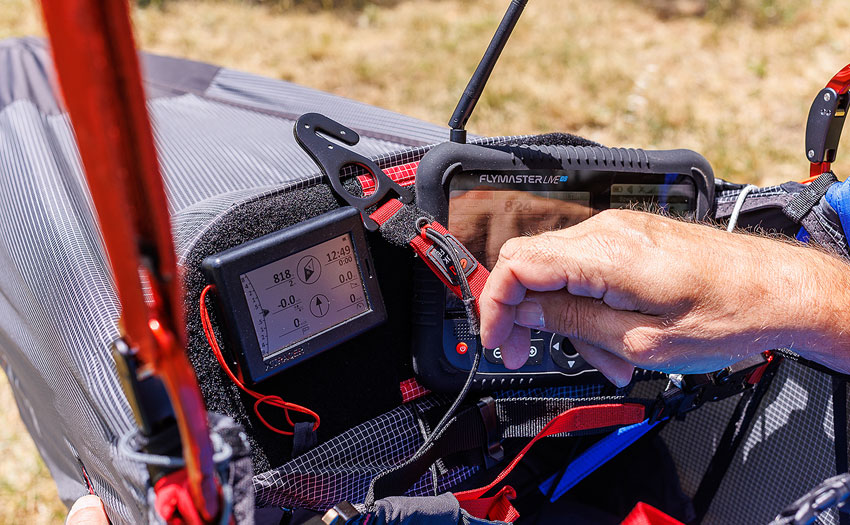
Storage
There are several pockets. The main one is the rear pocket, which is reasonably large but not the biggest I have seen. Inside is a simple internal pocket sewn into the liner material. This material feels quite flimsy, so you probably should pay a bit of attention to how you pack stuff in it. There are routing holes for a drinking tube and radio cable.
You could definitely fit enough for a short trip away, but those on bigger adventures may want a harness with more storage. Unlike many harnesses there is no ballast pocket in front of the protector as the reserve is in this area. There is, though, a large pocket under the flight deck that is integrated into the pod: this has a massive 5.3l volume in the large size. Additionally, there are zipped pockets on both sides.
The flight deck itself is well finished and has a clip to attach it to the chest-strap to keep it at a good angle. It is big enough to accommodate the large tablets that many pilots fly with these days. There is an integrated hook knife that has its own pocket.
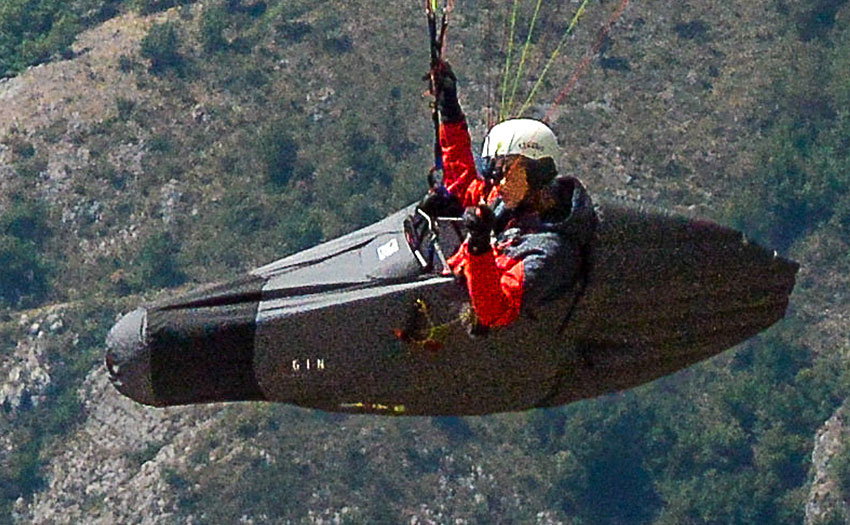
In the air
I flew the harness with a mix of EN-B and EN-C wings. I found it to be nice and stable but with enough information to make the most of the air. The roll can be easily adjusted using the chest strap, so you can slacken it off when searching out weak bubbles of lift then tighten it up when on glide. I felt at home with it very quickly. It doesn’t feel like there have had to be many compromises in the flying feel to reduce the weight.
On glide, the aerodynamic nature of the harness works in keeping it stable in the yaw axis thanks to the long fairing. The speed bar is very easy to use, which means you are more likely to make use of it. It makes for efficient flying.

The verdict
From the moment you set eyes on the Gin Genie X-Lite you know this is a well-finished product. The company have created a light harness that is still suitable for everyday use while keeping your pack lighter and more compact (and is perfect for us pilots with older backs). With its comfort and efficient feel it doesn’t seem like the flying side has been compromised to reduce the weight.
With its ease of use it would also make a great first pod for those looking for increased performance and warmth without the weight of a full pod harness.
Manufacturer’s specifications
Gin say: “The Genie X-Lite is aimed at pilots who want to make XC flights, including some hike-and-fly. Its features and performance will satisfy the most dedicated XC pilots.”
Pilot level: Intermediate pilots and above
Sizes: XS, S, M, L
Pilot height (cm): <165, 165-175, 170-185, 185-200
Weight (kg): 2.99, 3.08, 3.21, 3.48
Price: Around €1,700 / $2,000US
Certification: EN/LTF
Published in issue 232 (August 2022)



